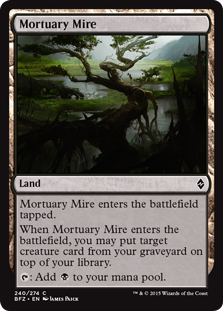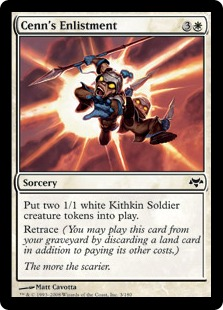Welcome back to another week of coverage of Boros in the Pauper format. Last time I went over a rough overview of the archetype, and today I’m here to go over a number of the different cards various builds often run. As you may recall last week I talked about the different versions of the deck that exist. Be they Kuldotha Boros, Boros Monarch, or Searing Blaze Seeker Boros, there’s a number of different ways to play the decks themselves. Thankfully, though, the core is often the same.
You’ll find most lists run playsets of Kor Skyfisher, Glint Hawk, Lightning Bolt, Galvanic Blast, Thraben Inspector, a couple Journey to Nowhere, and a few Battle Screeches. Six to eight two-mana artifacts that draw a card on entering the battlefield are also a core staple, usually including Prophetic Prism, Ichor Wellspring, and Alchemist’s Vial in different combinations depending on the specific build of the archetype. Wellspring sees play in Kuldotha builds due to the fact that you can get extra value by sacrificing it. Since you can’t get this in Monarch builds, those lists prefer to run Vial which can give them a bit of edge in stopping a crucial attack or block, or even fill up the graveyard should they choose to run Swirling Sandstorm in their sideboard.

You’ll find a fairly similar trend with the mana bases across the different decks. Usually you’ll find both artifact lands in Great Furnace and Ancient Den to go along with your small dose of basics. This helps you to turn on metalcraft as well as play Glint Hawks reliably. You also run certain duals like Boros Garrison and Wind-Scarred Crag. While Boros Guildgate has occasionally seen play, it’s inferior to the Crag which is quite affordable as is. You’ll also see some number of Forgotten Cave and Secluded Steppe to help filter through your deck. Last you’ll have your flex slots, often including utility cards such as Radiant Fountain, Mortuary Mire, Bojuka Bog, Kabira Crossroads, and Sejiri Steppe. The numbers on each of these cards vary more than the other core cards of the list, and you’ll find that if you look at various builds the numbers shift a lot. I recommend playing with the numbers, keeping in mind others that have put up results on MTG Goldfish’s page for the archetype, until you find one that feels right for you and your local metagame.
Aside from one or two slots, the lands are fairly rigid. The same can’t necessarily be said for the non-land cards, however. There’s a lot more options and even some normally sacred cows like Battle Screech can find themselves getting cut from the list. Usually, though, the flex slots as they’re called revolve a bit more around your overall removal package. While your sets of Bolts and Blasts usually put in plenty of work, sometimes you need a little more. And while Journey to Nowhere generally sees at least a pair of copies in the 75, you might want something that hits more than creatures.
While targeted removal is great, decks that revolve around lots of small creatures, from Delver to Elves, have been becoming more and more prevalent in the metagame. As such, it’s been becoming more common to see cards normally regulated to the sideboard make it into the maindeck in the form of Electrickery and to a lesser extent Krark-Clan Shaman to make sure you can take out those pesky problem boards. It also sometimes opts for a lone copy of Firebolt for some extra repeat damage or Oblivion Ring over a copy of Journey to be able to take care of a wider swath of cards.

Sometimes you want to extend your board that much further, however. Cenn’s Enlistment is a card that’s come up from time to time that helps build up your army and get rid of unneeded lands in the late game. In far fewer circumstances, some people even try running Sprout Swarm. You may be in Boros, but you can still generate the green mana for the card with Prophetic Prism; and then use the tokens made by it themselves to help with the costs. If you don’t want to push for tokens quite so much, however, Reaping the Graves offers you the ability to get back a number of creatures killed in the fray and potentially generate further value from your cantrip artifacts. This is the reason the deck also sometimes runs black nonbasic lands, apart from the clear value those lands generate on their own.
Finally we have a couple of cards used to help close out the game. Prismatic Strands, as mentioned last time, holds off your opponent from crushing you. It’s fairly recent tech that’s popped up over the last year. Not everyone chooses to run it in the maindeck, though you can usually expect to see a few out of the sideboard. The card that arguably pushed Boros to the top tier at first was Rally the Peasants. However, the card saw its greatest amount of play in the Kuldotha build before Palace Sentinels was released online. It no longer sees very much play these days, but some players run it as a way of ending a game quickly.
With so many ways to build these decks across the greater archetype, how will your list end up looking? I’ll help you round out your 75 next week when I talk about sideboard options and how the usual cards stand up against different matches. Until then, rally some tokens to victory and take your opponents down!
Kendra has been playing Magic since Urza block and never looked back. Playing a variety of formats and being known for championing Pauper in particular, the Elf Queen can be found hanging out on Twitter as well as streaming on Twitch, always seeking to better the community at large.

